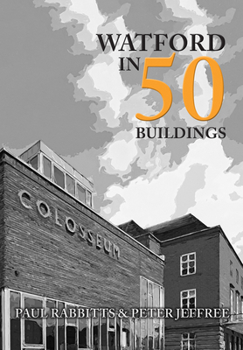Watford in 50 Buildings
(Part of the In 50 Buildings Series)
The town of Watford, in Hertfordshire, began as a settlement in the 12th century when the Abbot of St Albans, who owned the land here, was given permission to hold a weekly market. He chose a site on a slight rise above the ford over the River Colne, along a route already used by travelers. The Abbot also arranged for the first parish church--St Mary's--to be built adjacent to the market. In the Domesday Book there is no mention of Watford. The area of the current town and the land around it belonged to the Abbot's Manor of Cashio (later Cassio) and it continued to be controlled by the Abbot until the 16th century. A few buildings remain from this period; other gems are Monmouth House from the 17th century; The Free School, Frogmore House, Benskin House (now Watford Museum), Little Cassiobury and Russells from the 18th century; and some of the High Street shops. The early 1800s, saw the greatest changes with the opening of the Grand Union Canal and the railway. These transport links encouraged new industries and people to the town, which prompted a rapid expansion in housing and development. In this book, Paul Rabbitts and Peter Jeffree highlight 50 buildings spanning the centuries, which reveal Watford's rich history and tell the story of the changing face of this Hertfordshire town.
Format:Paperback
Language:English
ISBN:1445690128
ISBN13:9781445690124
Release Date:September 2019
Publisher:Amberley Publishing
Length:96 Pages
Weight:0.66 lbs.
Dimensions:0.3" x 6.5" x 9.1"
Customer Reviews
0 rating





